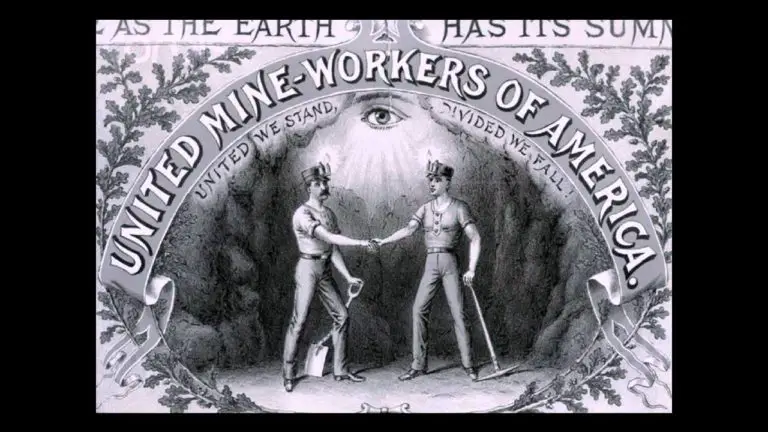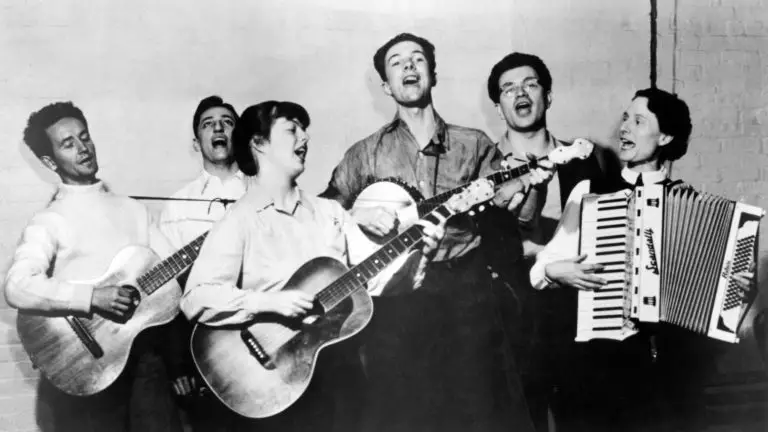With the moment in American history that we are experiencing right now, amid protests in all 50 states against police brutality towards African-Americans, the anthems of the past are returning to the streets as protesters march for what they believe in. Songs like “We Shall Overcome” and “Which Side Are You On” have a simplicity that allows for anyone to sing along with the simple refrain, one that can echo throughout a given space. The song has been an anthem in the past for unions, the Civil Rights movement and Climate marches, and currently, the protests over the killing of African-Americans by police around the country.

The song that asks this simple question was originally written by Florence Patton Reece in 1931. The wife of Sam Reece, a union organizer for the United Mine Workers in Harlan County, Kentucky, Florence wrote the song after being visited by mining company thugs who were out to kill her husband. The mine workers were locked in a bitter struggle with the owners, part of the Harlan County War where workers lost 10% of their wages (or were fired) due to cutbacks during the Great Depression. After going on strike with the support of United Mine Workers of America, the Kentucky National Guard was called in, who tear gassed a union rally on May 24, 1931. Sound familiar?
Sheriff J.H. Blair and his men came to our house in search of Sam – that’s my husband – he was one of the union leaders. I was home alone with our seven children. They ransacked the whole house and then kept watch outside, waiting to shoot Sam down when he came back. But he didn’t come home that night. Afterward I tore a sheet from a calendar on the wall and wrote the words to ‘Which Side Are You On?’ to an old Baptist hymn, ‘Lay the Lily Low.‘ My songs always goes to the underdog – to the worker. I’m one of them and I feel like I’ve got to be with them. There’s no such thing as neutral. You have to be on one side or the other. Some people say, ‘I don’t take sides – I’m neutral.’ There’s no such thing. In your mind you’re on one side or the other. In Harlan County there wasn’t no neutral. If you wasn’t a gun thug, you was a union man. You had to be.
Florence Patton Reece, via Laborheritage.org
Later in life, Mrs. Reece supported a second wave of miner strikes in 1973. She and others would perform “Which Side Are You On” to gatherings of miners, and later recorded the song for the album Coal Mining Women.
When pro-labor folk singer Pete Seeger began the work of collecting labor union songs in 1940, he came across “Which Side Are You On,” and recorded it with The Almanac Singers, the version of which would gain popularity.

The song would also appear on his 1967 album Pete Seeger’s Greatest Hits. The audience singing along with the refrain is haunting in the recording below. With each pass of the refrain, the collective audience voice grows louder.
The song was not reserved just for Seeger and union protests. ‘Which Side Are You On’ became part of the Civil Rights movement, and in 1961, James Farmer of the Congress of Racial Equality (CORE) revised the lyrics to fit the times during the Freedom Rides through the south. When CORE members felt that African Americans were betraying the causes of freedom and equality, they would sing to them
“Oh people can you stand it, tell me how you can.
Will you be an Uncle Tom, or will you be a man?”
In short time, Len Chandler, a folk musician from Ohio who was part of the Civil Rights movement, created new verses for the voting rights march from Selma to Montgomery in 1965. The lyrics would satirize those who were afraid to take a stand against the KKK and Alabama Governor George Wallace. A sample is seen here:
Come all you Northern liberals, take a Klansman out to lunch
But when you dine, instead of wine, you should serve nonviolent punch
A song that came from a labor struggle in the early years of the Great Depression, made its way through the 40s and 50s as a pro-union song, and later became part of the Civil Rights movement. Protest and social movements draw on Reece’s legacy each time they recite her lyrics, inspired from a time when company-hired thugs could aim to kill a man in his own home, with no fear of reprisal from law enforcement. Sound familiar?
There are numerous recordings of the song over the last 60 years, including versions by Ani DiFranco, Dropkick Murphys and Malvinas, all of whom put a fresh spin of their own on the iconic song.
Now, it is June 3, 2020. Today would be a good day to ask yourself this question. Which side are you on?
“Which Side Are You On” by Florence Patton Reece
Which side are you on boys?
Which side are you on?
Which side are you on boys?
Which side are you on?
They say in Harlan County
There are no neutrals there.
You’ll either be a union man
Or a thug for J. H. Blair.
Which side are you on boys?
Which side are you on?
Which side are you on boys?
Which side are you on?
My daddy was a miner,
And I’m a miner’s son,
He’ll be with you fellow workers
Until this battle’s won.
Which side are you on?
Which side are you on?
Which side are you on?
Which side are you on?
Oh workers can you stand it?
Oh tell me how you can?
Will you be a lousy scab
Or will you be a man?
Which side are you on?
Which side are you on?
Which side are you on?
Which side are you on?
Come all you good workers,
Good news to you I’ll tell
Of how the good old union
Has come in here to dwell.
Which side are you on?
Which side are you on?
Which side are you on?
Which side are you on?


Comments are closed.